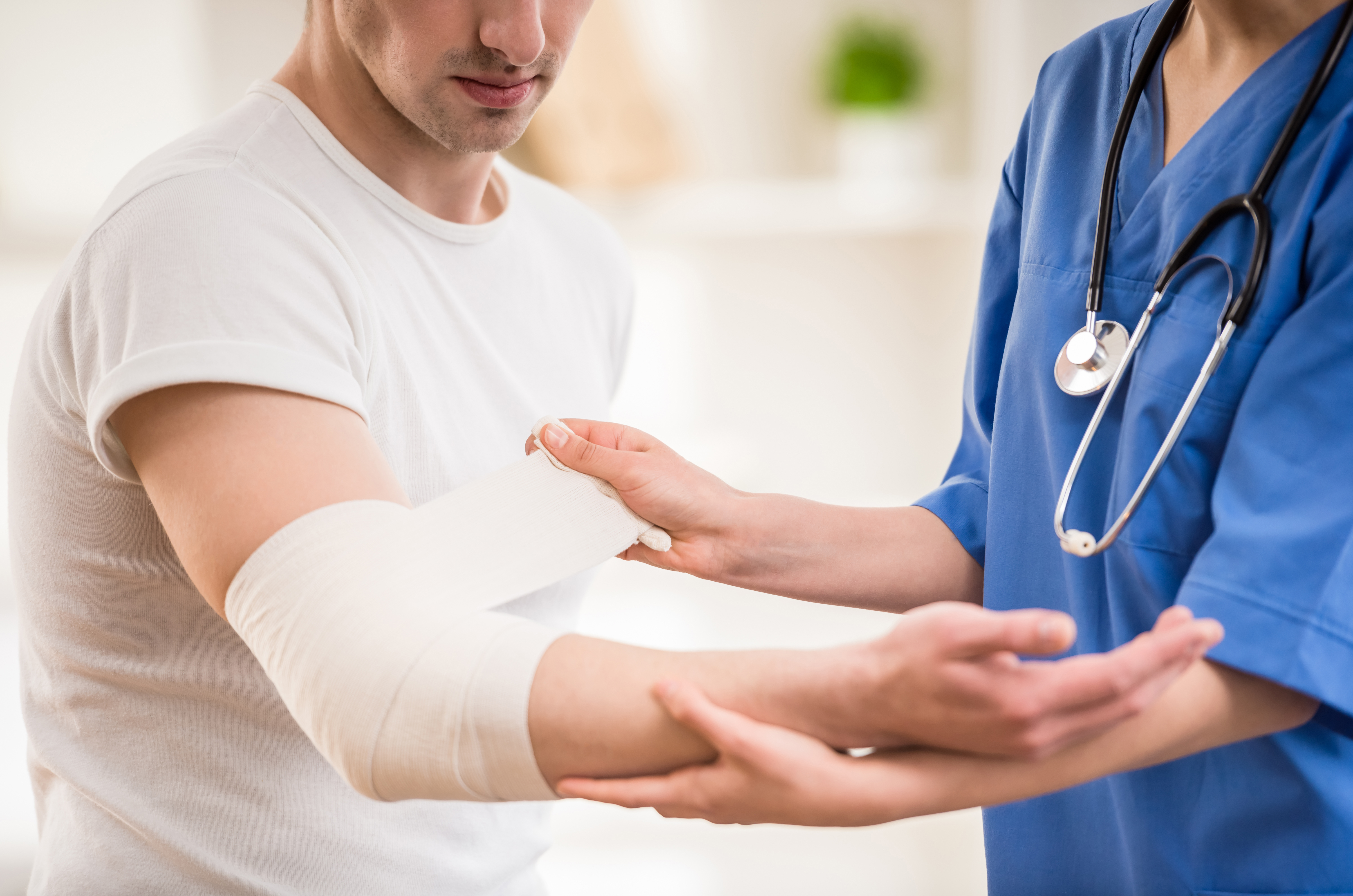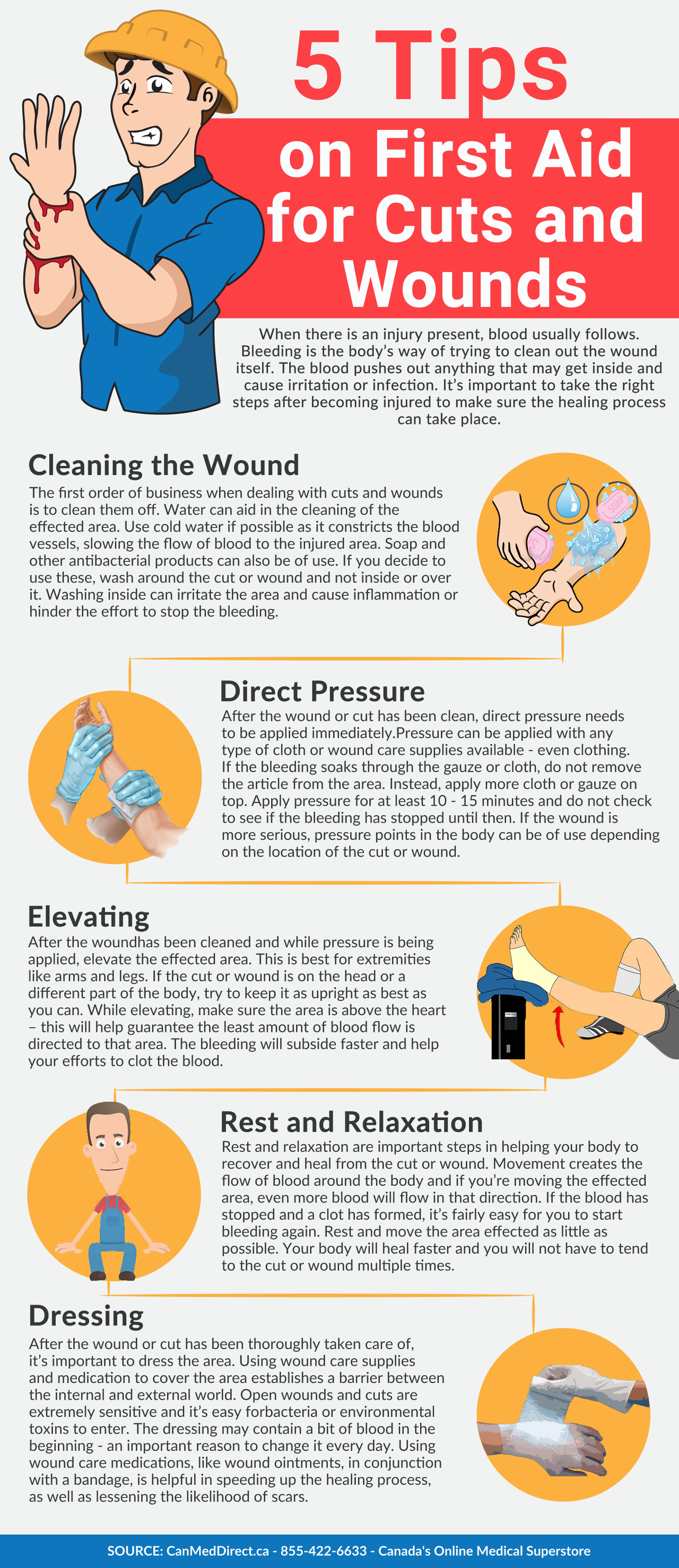5 Tips on First Aid for Cuts and Wounds

When there is an injury present, blood usually follows. Bleeding is the body’s way of trying to clean out the wound itself. The blood pushes out anything that may get inside and cause irritation or infection. It’s important to take the right steps after becoming injured to make sure the healing process can take place.

Cleaning the Wound
The first order of business when dealing with cuts and wounds is to clean them off. Water can aid in the cleaning of the effected area. Use cold water if possible as it constricts the blood vessels, slowing the flow of blood to the injured area. Soap and other antibacterial products can also be of use. If you decide to use these, wash around the cut or wound and not inside or over it. Washing inside can irritate the area and cause inflammation or hinder the effort to stop the bleeding.
Direct Pressure
After the wound or cut has been clean, direct pressure needs to be applied immediately. Pressure can be applied with any type of cloth or wound care supplies available - even clothing. If the bleeding soaks through the gauze or cloth, do not remove the article from the area. Instead, apply more cloth or gauze on top. Apply pressure for at least 10 - 15 minutes and do not check to see if the bleeding has stopped until then. If the wound is more serious, pressure points in the body can be of use depending on the location of the cut or wound.
Elevating
After the wound has been cleaned and while pressure is being applied, elevate the effected area. This is best for extremities like arms and legs. If the cut or wound is on the head or a different part of the body, try to keep it as upright as best as you can. While elevating, make sure the area is above the heart – this will help guarantee the least amount of blood flow is directed to that area. The bleeding will subside faster and help your efforts to clot the blood. If the injury sustained is more serious and you are helping someone else, be aware of their breathing and mental state. If they seem off, this may be a sign they are going into shock.
Rest and Relaxation
Rest and relaxation are important steps in helping your body to recover and heal from the cut or wound. Movement creates the flow of blood around the body and if you’re moving the effected area, even more blood will flow in that direction. If the blood has stopped and a clot has formed, it’s fairly easy for you to start bleeding again. Rest and move the area effected as little as possible. Your body will heal faster and you will not have to tend to the cut or wound multiple times.
Dressing
After the wound or cut has been thoroughly taken care of, it’s important to dress the area. Using wound care supplies and medication to cover the area establishes a barrier between the internal and external world. Open wounds and cuts are extremely sensitive and it’s easy for bacteria or environmental toxins to enter. The dressing may contain a bit of blood in the beginning - an important reason to change it every day. Using wound care medications, like wound ointments, in conjunction with a bandage, is helpful in speeding up the healing process, as well as lessening the likelihood of scars.
Caring for cuts and wounds can be time consuming, but it is necessary to take the right precautions. For a speedy recovery, use clean tools, apply direct pressure and dress the wound appropriately.


